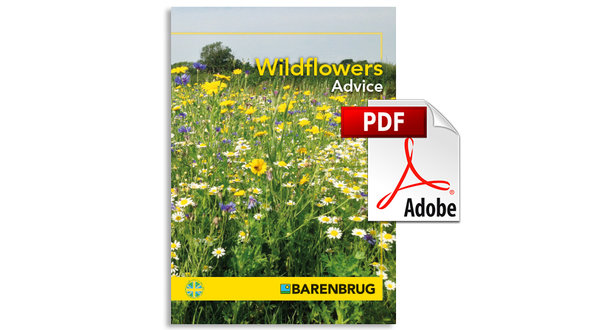Wildflower Planting Advice
Advice for sowing wildflowers

Advice for sowing wildflowers
Wildflower Preparation – Sowing Into Bare Soil
100% Wildflower Mixes (sowing rate 1 – 2g/m2)
For the best results, sow 100% Wildflower into bare soil.
You may add 1 or 2g of Cornfield Annuals to the mix for extra first year colour, as some perennial species will not flower until the 2nd year. Then follow the instructions below.
Grass and Wildflower Seed Mixes (sowing rate 4 – 5g/m2)
Due to the maintenance required in the first year to establish perennial wildflower seed, expect most of these species to flower in the 2nd year. In the first growing year, every 6 weeks or so, cut all growth back to 60-70mm this will give the slower-growing perennial wildflowers the chance to establish. After the first flowering of the Annual species, cutting back should stimulate at least a second flush later in the year.
Then follow the instructions below:
1. The sowing area should be cleared of vegetation prior to sowing the seed (spraying o. a few weeks before sowing or by other means)
2. Prepare a fine seed bed and sow lightly at the above sowing rate, evenly, either manually or by mechanical means (drilled, hydro-seeded etc). If sowing manually, you can mix the seed with fine, dry sand to bulk out the mix and make it easier to sow
3. To ensure good contact between the seed and moisture in the soil, the sown area should be lightly pressed down either by a light roller or other methods, depending on the type of area. It is important that the seed does not dry out, so it will be beneficial to water the area in the first few weeks if dry weather prevails
4. At the end of the Summer or in early Autumn, make a final cut after flowers have shed their seed, collect and remove cuttings. No maintenance required during winter
5. From Year 2 onwards, you may wish to cut back any winter growth in early Spring, removing the cuttings afterwards, but the area may be left throughout the flowering season and cut back only when flowering has finished and seed has shed at the end of Summer or early Autumn. As the area establishes, the Wildflowers will strengthen and proliferate, giving a stronger display year-on-year
6. Spot treat or remove invasive weeds.
Wildflower Preparation – Sowing Into Existing Grassed Areas
100% Wildflower Mixes (sowing rate 1 – 2g/m2)
Sowing wildflower seed into established areas of grass will vary in degree of success. For best results, sow either a 100% Wildflower seed mix or an 80/20 Grass/Wildflower mix into bare soil.
1. The sowing area should be cleared of vegetation prior to sowing the seed (spraying o. a few weeks before sowing or by other means)
2. Prepare a fine seed bed and sow lightly at the above sowing rate, evenly, either manually or by mechanical means (drilled, hydro-seeded etc). If sowing manually, you can mix the seed with fine, dry sand to bulk out the mix and make it easier to sow
3. To ensure good contact between the seed and moisture in the soil, the sown area should be lightly pressed down either by a light roller or other methods, depending on the type of area. It is important that the seed does not dry out, so it will be beneficial to water the area in the first few weeks if dry weather prevails
4. At the end of the Summer or in early Autumn, make a final cut after flowers have shed their seed, collect and remove cuttings. No maintenance required during winter
5. From Year 2 onwards, you may wish to cut back any winter growth in early Spring, removing the cuttings afterwards, but the area may be left throughout the flowering season and cut back only when flowering has finished and seed has shed at the end of Summer or early Autumn. As the area establishes, the Wildflowers will strengthen and proliferate, giving a stronger display year-on-year 6.
6. Spot treat or remove invasive weeds.

See our range of wildflower mixtures

For more information on Wildflowers, order our brochure.